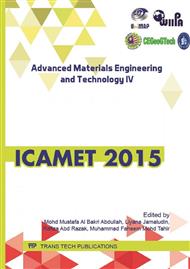p.560
p.565
p.573
p.578
p.583
p.590
p.598
p.603
p.608
SAC-OCDMA over Indoor Optical Wireless Communication (OWC) System Based on Zero Cross Correlation (ZCC) Code
Abstract:
This article investigates the spectral amplitude coding, optical code division multiple access (SAC-OCDMA) over indoor optical wireless communication (WO) system for various data rates and different receiver’s positions under the effect of ambient light noise. OW technology offers high speed communication with high level of security during data transmission. But it suffers from the multiple access interference (MAI) and phase induced intensity noise (PIIN) when the system associated with simultaneous multiple users. Therefore, the optical code division multiple access (OCDMA) technology is used based on zero cross correlation (ZCC) code in order to reduce those impairments that existed in OWC systems. The major advantage of ZCC code is its ability to eliminate the PIIN, thus minimize the MAI. The results show that at a bit error rate (BER) of 10-9, the system has the ability to perform at a transmission rate up to 1.2 Gbps. It also offers an excellent degree of mobility at all positions within the room at a data rate of 622 Mbps.
Info:
Periodical:
Pages:
603-607
Citation:
Online since:
May 2016
Authors:
Price:
Сopyright:
© 2016 Trans Tech Publications Ltd. All Rights Reserved
Share:
Citation:


